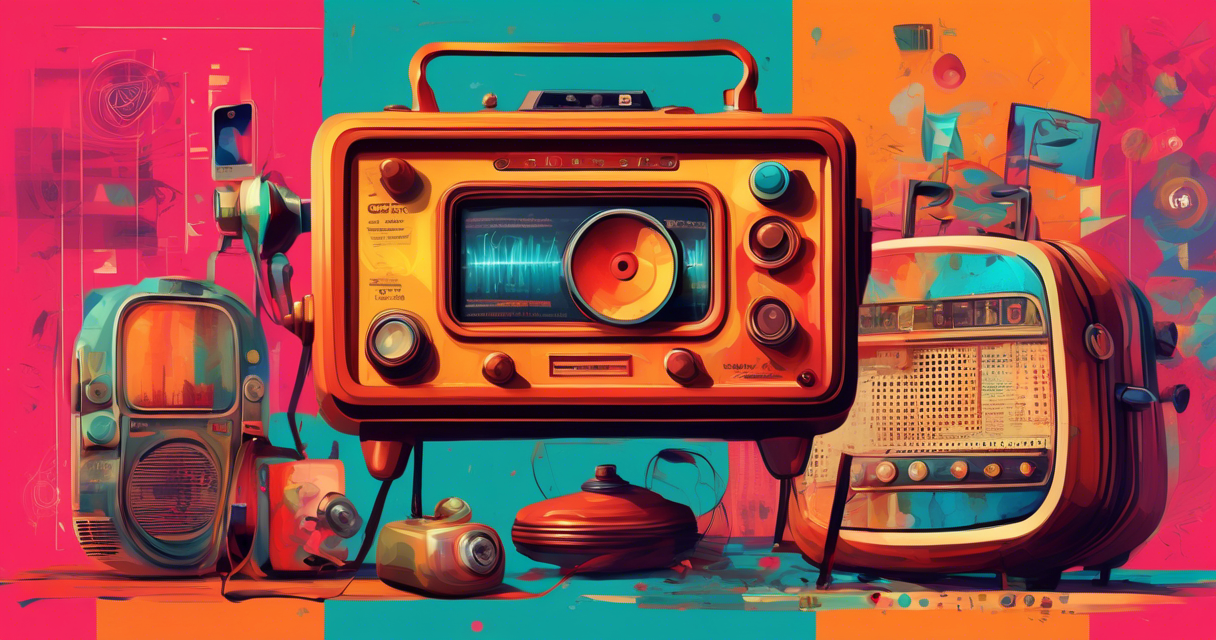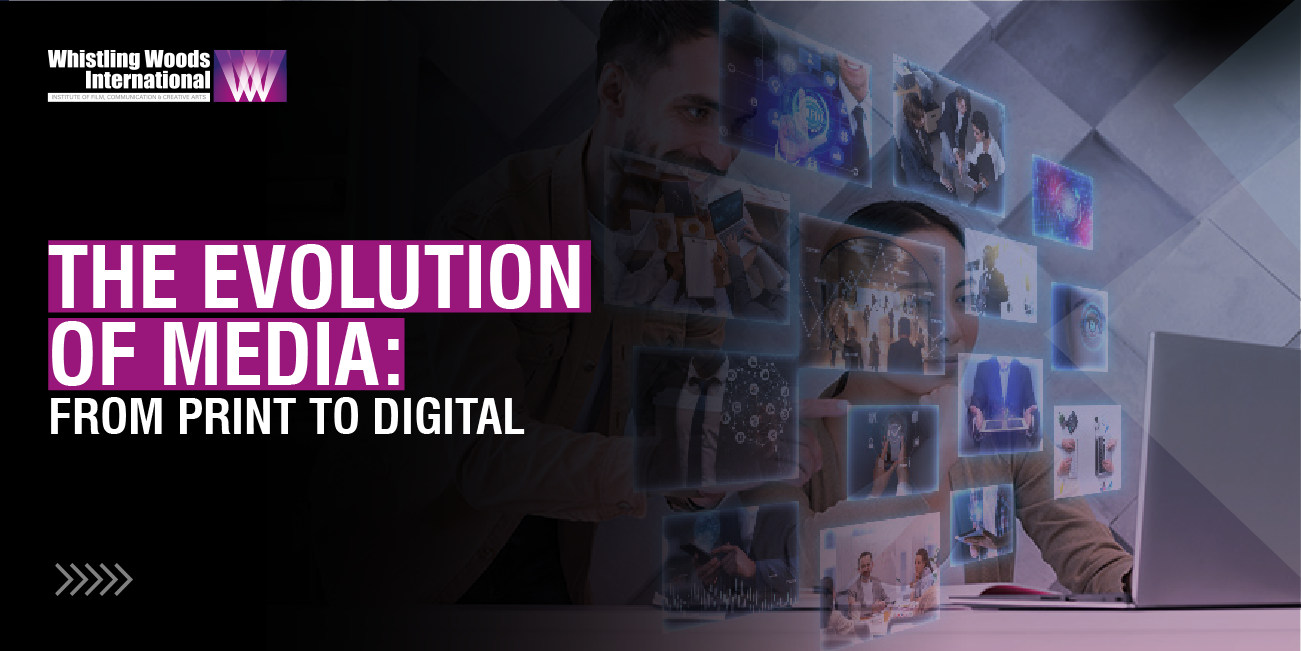The evolution of media has been a remarkable journey, transforming how information is disseminated, communicated, and consumed by society. Over the years, media has transitioned from its humble origins in print to the dynamic landscape of digital communication that we experience today.
This transformation has not only revolutionised the way we access information but has also shaped the very fabric of our societies and cultures.
As of April 2023, there were 5.18 billion internet users worldwide exemplifying the ubiquity of digital media and highlighting its pervasive influence on how people across the globe engage with information.
In this blog, we will delve into the evolution of media, tracing its journey from print to digital, and exploring the impact it has had on mass communication.
The History Of Mass Media: From Print To Communication
Before the advent of digital platforms, the media landscape was vastly different. Print media, which included newspapers, magazines, and books, reigned supreme. In this pre-digital era, information dissemination was a more controlled and centralised process.
The power to create and share content was concentrated in the hands of a select few, often the editors and publishers of established newspapers and magazines. The consumption of information was a passive activity, with limited opportunities for engagement and interaction.
Check our recent article: Basic Cinematography & Film Tecniques for Better Cinematic Shots
What Changes Were Introduced?
The emergence of digital technology marked a turning point in the evolution of media. The introduction of the internet, coupled with advancements in computing and mobile devices, democratised the creation and distribution of content.
Suddenly, anyone with an internet connection had the power to become a content creator, blurring the lines between producers and consumers of information. Social media platforms, blogs, and websites provide individuals with the means to express their thoughts, opinions, and creativity on a global scale.
This shift from print to digital also brought forth multimedia elements such as images, videos, and interactive content, enhancing the overall user experience. Traditional media communication outlets had to adapt or risk becoming obsolete. Consequently, newspapers and magazines started creating digital editions and websites to cater to the changing preferences of their audience.
Impact Of The Changes: Transforming Communication
The evolution of mass media and communication has had profound societal implications. One of the most significant impacts is the democratisation of information. The barriers to entry for sharing ideas and information have been drastically lowered, giving rise to a diverse range of perspectives. It has empowered marginalised voices, enabling them to participate in conversations and narratives, which were previously dominated by mainstream media.
Additionally, the instantaneous nature of digital communication has transformed the way news is reported and consumed. With real-time updates, events can be broadcasted and discussed as they unfold, allowing for a more engaged and informed audience.
Evolution Of Media In India: A Unique Trajectory
 In India, the evolution of media follows a distinct trajectory, shaped by the country’s cultural, social, and political dynamics. Print media has a rich history in India, with newspapers like “The Hindu” and “The Times of India” playing pivotal roles in informing the masses. The transition to digital media in India was accelerated by the increasing penetration of smartphones and affordable internet access. This shift not only expanded the reach of media content but also enabled vernacular languages to thrive in the digital space, making information accessible to a wider audience.
In India, the evolution of media follows a distinct trajectory, shaped by the country’s cultural, social, and political dynamics. Print media has a rich history in India, with newspapers like “The Hindu” and “The Times of India” playing pivotal roles in informing the masses. The transition to digital media in India was accelerated by the increasing penetration of smartphones and affordable internet access. This shift not only expanded the reach of media content but also enabled vernacular languages to thrive in the digital space, making information accessible to a wider audience.
Social media platforms have also played a transformative role in the evolution of media in India. Platforms like WhatsApp, Facebook, and Twitter have become integral to the way Indians consume and share information.
What Shape Is Media In Today?
Today, the media landscape is a complex amalgamation of traditional and digital mediums. Print media continues to exist, albeit in a more digitised form, coexisting with the vast realm of online media. The convergence of these two worlds has led to new possibilities for content creation, distribution, and engagement.
The proliferation of smartphones and the rise of social media have further transformed media consumption habits. Audiences are no longer passive recipients of information but active participants in shaping narratives. Content creators, influencers, and citizen journalists now have the power to amplify their voices and reach audiences across the globe.
Institutions of higher education have also recognised the significance of this evolution. Mass media and communication courses have adapted to the changing landscape by incorporating digital media strategies, media ethics in the digital age, and the study of online communities. Students now have the opportunity to explore the nuances of media communication in the modern era, preparing them for careers that require a deep understanding of both traditional and digital media platforms.
Start Your Mass Media And Communication Career Today
Amidst the digital revolution, the mass media and communication realm is ripe for expansion, offering immense growth potential. The sector is witnessing an influx of job prospects, signifying a thriving landscape. By enrolling in a mass media and communication course, you position yourself as a catalyst for transformative communication innovations.
Whistling Woods International is one such institute that can help you venture into your career in this exciting field. With our specialised programmes, we equip you to excel in the dynamic world of media and entertainment.
Courses offered by us:
This 3-year, 6-semester programme aims to provide students with a comprehensive grasp of media and entertainment industry management. Throughout their academic journey, students will engage with subjects related to management, contextual studies (general education), and both theoretical and hands-on aspects of media and entertainment.
This course’s duration is 2 years accounting for 4 semesters, with an objective to provide students with in-depth knowledge about management techniques with a broad comprehension of how the media industry is handled in practical, real-life situations.
You can check our ‘Programmes’ section for more information about the mass media and communication course that we offer.

